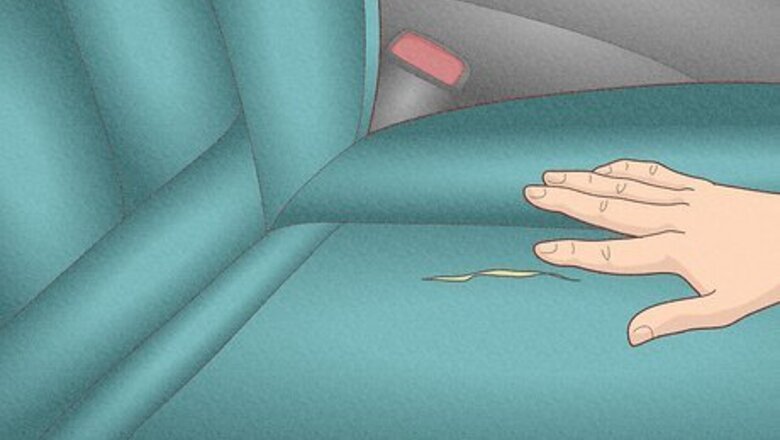
views
When should I get my car seat professionally repaired?
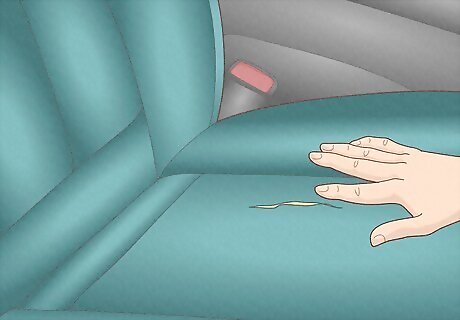
Hire a professional detailer if you don’t want a visible repair. While you can make your repairs at home pretty easily, a lot of them are still noticeable from a distance. If you’re planning on selling your vehicle or you care a lot about the cosmetics of your upholstery, an automotive detailer will do what they can to completely hide the damage.
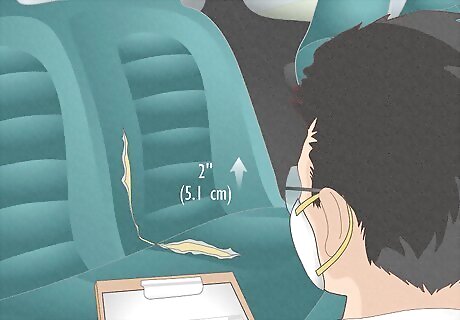
Take your vehicle in for leather tears longer than 2 in (5.1 cm). Longer tears are more difficult to hide and they’re more likely to break open again. If you have leather seats, measure the length of the tear before you start your repairs. If the tear is more than ⁄2 in (1.3 cm) wide, then take it into a professional as well.
How much does it cost to fix a tear in a car seat?
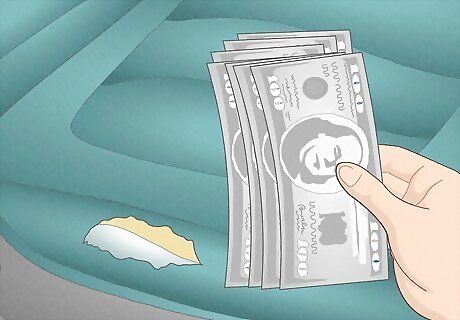
Seam repairs will cost you around $35 USD. It’s normal for seams to rip as they get older, but luckily they’re one of the cheapest repairs you can get. The professional detailer will resew the seam tightly and securely so it’s less likely to tear apart again.
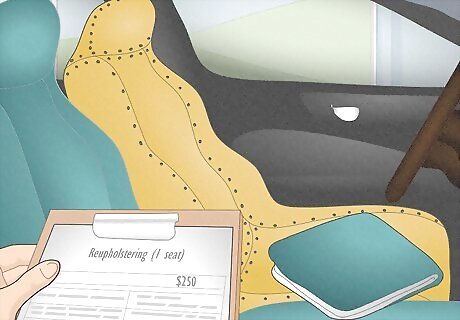
Reupholstering a seat can cost anywhere from $250–750 USD. For major damage, a detailer won’t be able to sew or patch your seat and may need to replace the fabric altogether. The price you’ll end up paying varies depending on the material, size, and style of your seat. A detailer may be able to replace a single panel of upholstery on your seat for a lower cost.
How do I fix a tear in a leather or vinyl seat at home?
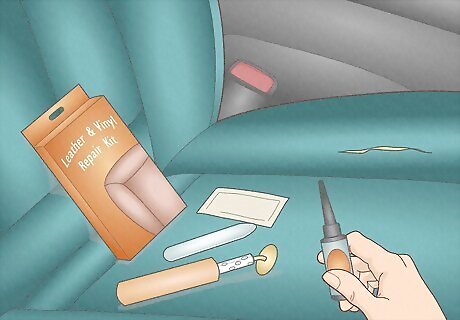
Use a leather and vinyl repair kit for the cleanest fix. Leather and vinyl repair kits have everything you need, including a backing piece of fabric, glue, adhesive filler, applicators, color compounds, and texture sheets. After you clean your upholstery, slide the backing sheet underneath the tear and glue the loose edges down to it. Then, mix the compounds so they’re the same color as your seat and apply it inside the tear. Finally, press a texture sheet on the compound and let it set until it's dry. You can buy leather and vinyl repair kits from your local auto supply or craft store. Even though your kit comes with a color mixing guide for the filler, it may not blend in perfectly with your upholstery. If your kit came with a heat iron, then you need to heat-treat the compound for it to set. Press the hot iron against the back of the texture sheet for 30–45 seconds.
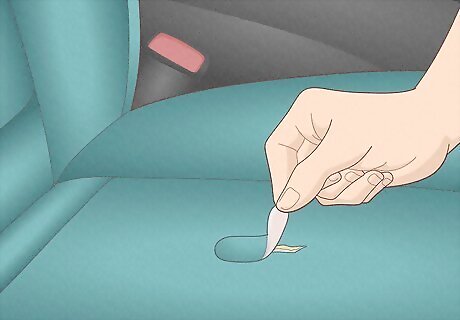
Apply a patch for a quicker, but more noticeable repair. Look for a leather or vinyl patch that’s similar in color and texture at your local craft supply store. Then, cut the patch so it’s the same shape and slightly larger than your tear to help hide the edges. Put a piece of wax paper underneath the torn fabric to keep your patch from sticking to the cushion. After that, just apply a leather adhesive to the back of the patch, press it down over the tear, and let it dry. Avoid sitting in the seat while the adhesive dries, or else you could make the patch fall off. Some patches already have an adhesive backing, so all you have to do is cut it down to size, remove the backing paper, and press it over the hole.
How do I repair cracked leather?
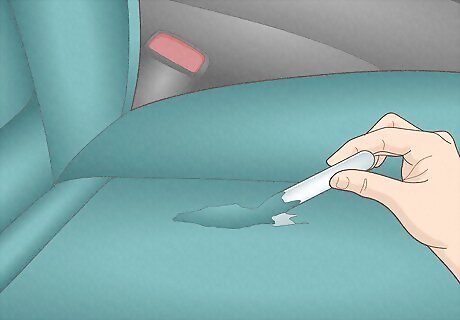
Fill in any deep cracks with a leather filler. Clean your seat and dry it thoroughly so your filler adheres properly. If you’re using colored leather filler, mix the color compounds to match the color of your seat. Use a plastic applicator or spatula to spread the filler over the cracks on the seat. Smooth the filler out as best as you can so it’s level with the rest of your seat. Then, just let the filler dry completely before sanding it down smooth. You can buy leather filler from your local automotive supply store. If you use uncolored leather filler, then you’ll have to apply dye for it to match your seat.
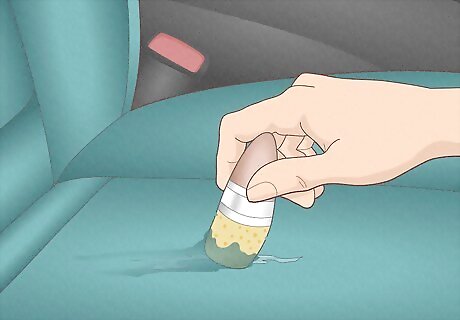
Hide surface cracks with a leather dye that matches your seat color. Make sure you buy a dye that’s close to the color of your seat so your repair doesn’t stand out too much. Simply apply a coin-sized amount of dye onto a soft sponge applicator and wipe it onto your seat using circular movements. Let the dye dry completely before checking if you can still see cracks in your seat. Dry the dye with a heat gun if you want to work more quickly. If you can still see cracks, then apply another thin layer of your dye to the seat.
How do I repair a tear in a cloth car seat?
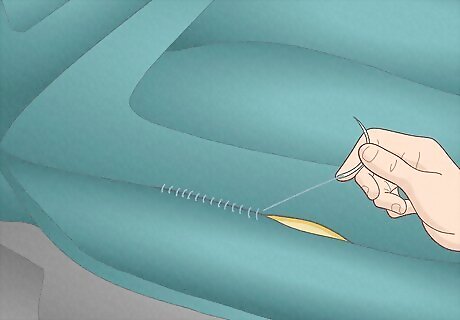
Sew the tear to keep it from ripping any further. When you’re picking thread, find one that’s a similar color to your seat so it doesn’t look out of place. Cut about an arm’s length off of your spool and double-thread it through a curved needle. Push the needle through both sides of the fabric at the end of the tear and sew a running stitch every ⁄2 in (1.3 cm). Tie a knot at the end of the tear to finish your repair. Hold the 2 sides of the tear together with your other hand so you get the tightest seam. If you’re missing any of the cushion underneath your seat, fill it in with padding from a craft store before you sew it back up. Be careful not to pull the thread too tightly, or else it could break and you’ll have to start over again.
How do I repair a hole in a car seat without sewing?
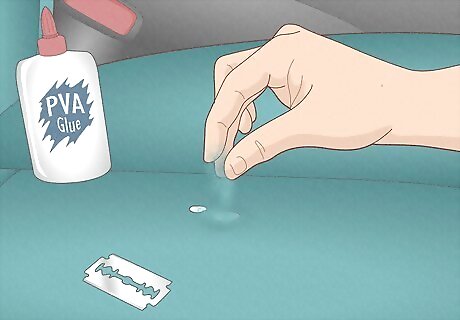
You can fill small holes with craft glue and fabric fibers. Look for a loose section of fabric from your vehicle’s carpeting or the bottom of the seat that’s the same color as the part you’re fixing. Take a razor blade to the edge of the fabric and shave some of the fibers off. Squeeze a little bit of white craft glue you have at home into the hole. Then, push your loose fibers into the hole so they’re level with the rest of your seat’s upholstery and let it dry. This works great for small punctures or cigarette burns in your seat. If you can still see an indent around your repair, apply a little more glue and fabric fibers until it’s not visible anymore.



















Comments
0 comment